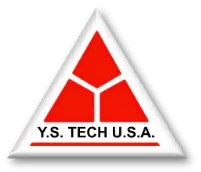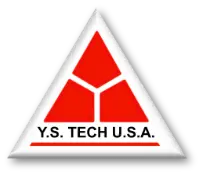Everything You Need to Know About Optimizing Heatsink Design for Medical Devices: Balancing Performance and Compliance
Hot spots aren’t just uncomfortable—they can be dangerous, especially when hidden inside devices meant to heal us. Imagine life-saving medical equipment shutting down mid-procedure due to overheating. Not exactly the kind of reliability you expect in a hospital or clinic setting.
So how do you keep your cool—literally and figuratively—when designing heat sinks for medical devices?
Every decision in medical device design, from material selection to thermal strategy, impacts patient safety, device longevity, and regulatory approval. Heat sink design sits at the intersection of performance and compliance: get it right, and your devices run smoothly for years; get it wrong, and you’re looking at recalls, compliance issues, or worse—patient harm.
This guide breaks down what you need to know. We’ll walk you through the essentials of heat sink design, spotlight the most common design myths, outline proven strategies, and offer expert insight on getting thermal management right from day one.
What You’ll Learn:
-
The basics of heat sink design for medical devices
-
Why this topic is more critical than ever
-
Common myths and misconceptions to avoid
-
Pros and cons of major design strategies
-
A step-by-step approach to getting it right
-
Expert insights from industry leaders
-
Key takeaways for your next project
The Basics of Heat Sink Design for Medical Devices
At its core, a heat sink moves heat away from sensitive electronics. In medical devices, this isn’t just about performance—it’s about precision, safety, and reliability.
Even a 10°C spike in temperature can cut component lifespan in half. According to Arkco Sales, heat sinks dissipate heat through increased surface area and thermally conductive materials like aluminum or copper.
Key factors to consider:
-
Material choice: Copper offers superior thermal conductivity; aluminum is lighter and easier to integrate.
-
Surface area: More fins and creative geometries expose more heat to air for faster dissipation.
-
Airflow: Natural convection or forced air (fans/blowers) depends on the device’s environment and power constraints.
Pro tip: In compact devices, even small tweaks in fin design can significantly improve thermal efficiency.
Why Heat Sink Design Is More Important Than Ever
Medical devices are shrinking—yet their computing and diagnostic power is growing. This means more heat, in less space.
Handheld ultrasound scanners, for instance, must deliver hospital-grade accuracy while running on batteries and staying cool to the touch. Poor thermal design risks everything from device discomfort to outright failure.
And if you think you can patch this later—think again. According to Boyd Corp, late-stage thermal fixes can inflate costs by 50% or more.
Then there’s compliance: standards like IEC 60601-1 demand not just functionality, but proof of safety across thermal conditions.
Common Myths About Heat Sink Design in Medical Devices
Myth 1: Only high-power devices need heat sinks.
False. Even low-power wearables can fail due to heat accumulation in tight enclosures.
Myth 2: You can add a heat sink late in the design process.
A dangerous shortcut. Retrofits are often bulky, inefficient, and noncompliant.
Myth 3: Bigger is always better.
In constrained medical devices, oversized heat sinks simply don’t fit—and may block airflow.
Myth 4: Fans are always the best solution.
Not for battery-powered gear. Active cooling increases power draw and failure points. Sometimes, passive solutions are smarter.
As one engineer put it: “Thermal management isn’t a problem—until it’s the only problem.”
The Pros and Cons of Heat Sink Design Strategies
Passive Cooling (fins, pins, metal plates)
✅ Silent, no moving parts, low power
❌ Limited heat dissipation, airflow dependent
Active Cooling (fans, blowers)
✅ Greater heat-handling capacity, tunable
❌ Adds noise, complexity, power consumption
Hybrid Solutions (passive + active)
✅ Flexibility and enhanced cooling performance
❌ Harder to integrate into small or portable designs
How to Get Heat Sink Design Right: Step-by-Step
-
Define thermal limits: Check max allowable temps for every critical component using datasheets and safety guidelines.
-
Map heat sources: Identify hotspots early—thermal simulations can save you weeks.
-
Loop in thermal experts early: Engage specialists before your form factor is locked.
-
Select smart materials: Aluminum works well in most cases, but copper may be ideal for compact, high-load zones.
-
Optimize shapes and surfaces: Use 3D modeling to refine geometry and airflow.
-
Decide cooling method: Balance passive vs. active vs. hybrid based on your constraints.
-
Simulate real-world usage: Test under practical stress—think busy ER, high-cycle use, etc.
-
Document everything: You’ll need it for IEC audits and FDA submissions.
What Experts Are Saying
“Thermal management is not an afterthought—it’s a critical design parameter from day one.”
— Medical Design Briefs
“Our biggest wins came when thermal considerations shaped the entire device architecture.”
— Senior engineer, global medical OEM
“Simulation tools now let us predict and optimize cooling before a prototype is built—saving time and budget.”
— Cademix Institute of Technology
Key Takeaways
-
Think thermal early. Waiting leads to costly redesigns and compliance risks.
-
Balance material, shape, and airflow to optimize heat transfer in constrained spaces.
-
Choose the right cooling method based on size, power, and user environment.
-
Design for compliance as much as performance.
-
Test, iterate, and document everything before launch.
As medical devices get smaller and more powerful, heat sink design is no longer optional—it’s mission-critical. Get it wrong, and you’re facing overheating, product delays, and regulatory setbacks. Get it right, and you’ll deliver reliable, efficient, and safe devices that make a difference in the real world.
FAQs
Q: Why is effective heat sink design critical for medical devices?
A: It prevents overheating, protects internal components, and ensures compliance with safety standards—key to both performance and patient safety.
Q: When should thermal management be addressed?
A: As early as possible. Starting at the concept stage enables better solutions and avoids costly rework.
Q: What factors impact performance?
A: Material choice, fin geometry, surface area, airflow strategy (passive vs. active), and thermal load distribution.
Q: How does heat sink design support compliance?
A: By meeting thermal safety limits set by standards like IEC 60601-1, and providing testable, documented proof of safety under real-world use.
Q: What are the benefits of combining passive and active cooling?
A: You get stronger performance—but at the cost of increased complexity, space, and power draw.
Q: How do user needs influence design?
A: Portability, battery life, noise, and comfort all factor into the best cooling method for the application.
A: Advanced simulation and modeling software can optimize heat flow before physical prototyping, reducing iterations and improving outcomes.



